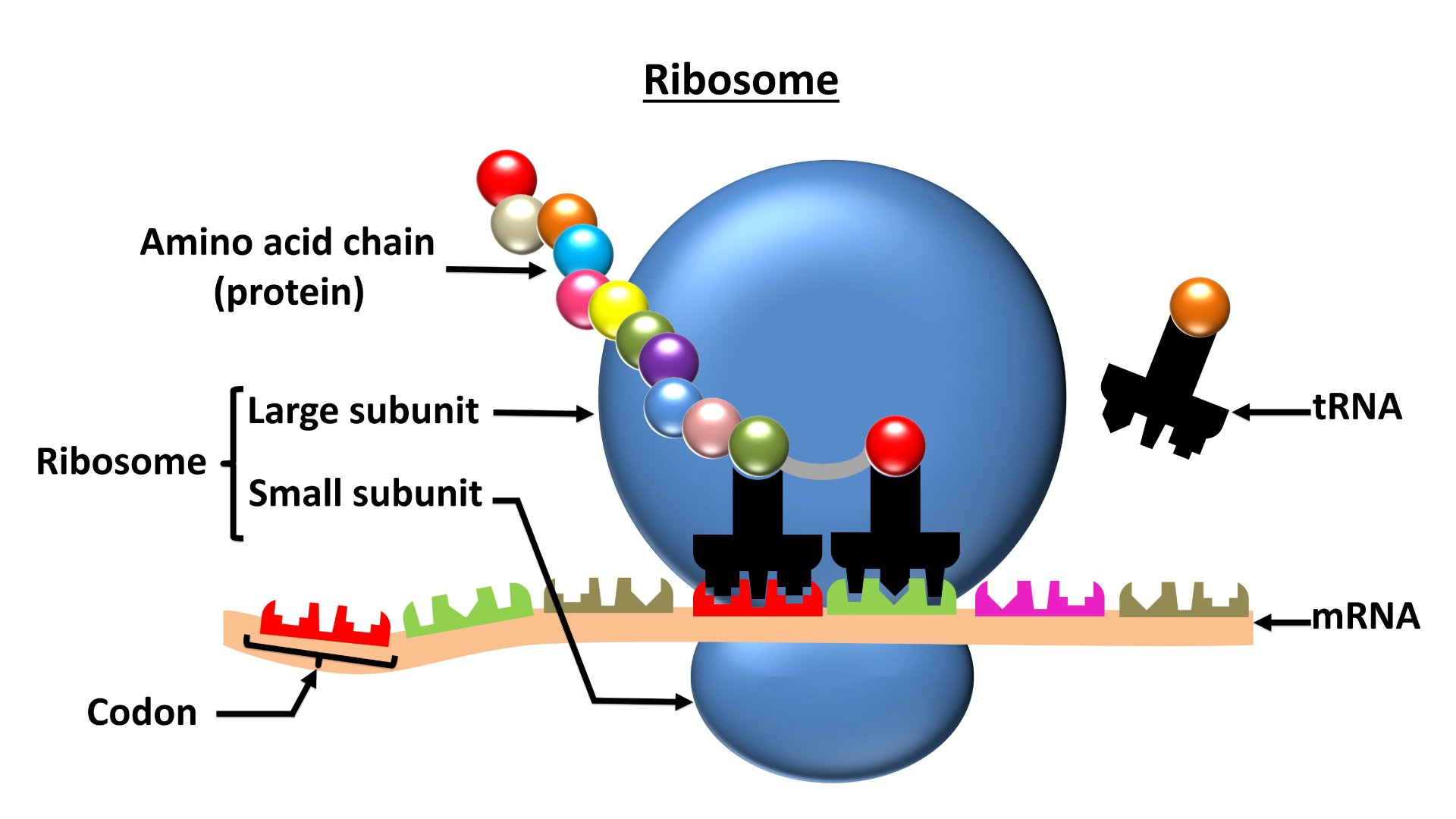The subunits of the ribosomes are:
- 80s ribosomes - are made of 60s and 40s subunits.
- 70s ribosomes - are made of 50s and 30s subunits.

Important Points
- Composition of the structure of ribosome:
- They are composed of ribonucleic acid (RNA) and proteins
| Type | Composition |
| 70s | 60% rRNA + 40% proteins |
| 80s | 40% rRNA + 60% proteins |


Additional Information
- Photosynthesis: It is the process by which green plants and some other organisms use sunlight to synthesize nutrients from carbon dioxide and water. In this process, plant the chlorophyll, carbon dioxide, water, sunlight, and release oxygen.
- Synthesis of Fatty acids occurs in the cytoplasm.
Share on Whatsapp
India’s #1 Learning Platform
Start Complete Exam Preparation
Daily Live MasterClasses
Practice Question Bank
Mock Tests & Quizzes
Trusted by 6 Crore+ Students
General Science Question 7
What type of waves are light wave?
- Transverse wave
- Longitudinal wave
- Both A & B
- None
Answer (Detailed Solution Below)
Option 1 : Transverse wave
General Science Question 7 Detailed Solution
- Wave: The disturbance that transfers energy from one place to another is called a wave.
There are mainly two types of waves :
- Transverse waves: The wave in which the movement of the particles is at right angles to the motion of the energy is called a transverse wave. Light is an example of a transverse wave.
- Longitudinal wave: The wave in which the movement of the particles is parallel to the motion of the energy is called a longitudinal wave. The sound wave is an example of a longitudinal wave.
- Light-wave is a transverse wave because its components vibrate perpendicular to its direction of propagation. So option 1 is correct.
Share on Whatsapp
India’s #1 Learning Platform
Start Complete Exam Preparation
Daily Live MasterClasses
Practice Question Bank
Mock Tests & Quizzes
Trusted by 6 Crore+ Students
General Science Question 8
Among the following statements which is/are correct? 1. Plants convert energy from sunlight into food stored as carbohydrates 2. Plants have chlorophyll 3. Plant cells do not have cell walls
- Only 1 is correct
- Only 1 and 2 are correct
- Only 1 and 3 are correct
- All are correct
Answer (Detailed Solution Below)
Option 2 : Only 1 and 2 are correct
General Science Question 8 Detailed Solution
- The leaves have a green pigment called chlorophyll.
- It helps leaves to capture the energy of the sunlight.
- This energy is used to synthesise (prepare) food from carbon dioxide and water. Since the synthesis of food occurs in the presence of sunlight, it is called photosynthesis.
In the presence of sunlight Carbon dioxide + water → Carbohydrate + oxygen.
- Some plants, green algae, and cyanobacteria can perform photosynthesis.
- The process of photosynthesis is commonly written as
6CO 2 + 6H 2 O + Sun-Light → C 6 H 12 O 6 + 6O 2
Plant cells have a cell wall to protect them and make them rigid structure.
1. Plants convert energy from sunlight into food stored as carbohydrate’s - Correct
2. Plants have chlorophyll. - Correct
3. Plant cells do not have cell walls. - Incorrect.

Additional Information
In the plant cells, there are different components and organelles for specific functions-

- Cell Wall – It is a rigid layer composed of cellulose. It is the outermost layer of the cell, below this cell membrane is present. The primary function of the cell wall is to protect and provide structural support to the cell.
- Cell Membrane – It is a semi-permeable membrane that helps in regulating and the substance for entry and exit inside and outside the cell.
- Nucleus – It is a vital part of the cell as it contains all the information or DNA of the cell and their heredity information for growth and cell division.
- Vacuole – Most of the part of the plant cell is occupied by the vacuole. It is surrounded by Tonoplast. The vital role of the vacuole is to provide support again the pressure of the cell wall.
- Golgi apparatus – They act as a transport system in the cell, as they transport various molecules to a different part of the cell.
- Ribosomes – They are the sites of protein synthesis, also termed as the protein factory of the cell.
- Mitochondrion – They break the complex molecules and produce energy and hence called the powerhouse of the cell.
- Lysosomes – They are termed suicidal bags as they hold the enzymes that are capable to digest the whole cell itself.


















